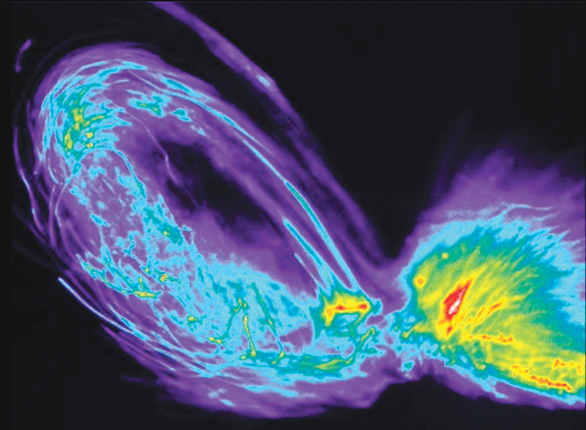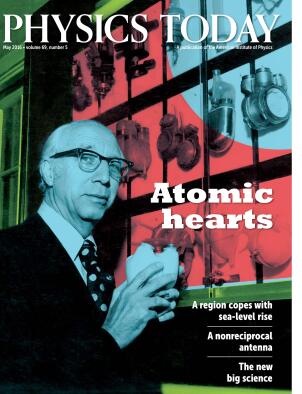Dissipation in breaking waves
DOI: 10.1063/PT.3.3161
At some point on their voyage, passengers who cross the Atlantic Ocean by ship will see waves breaking in the open sea. The waves’ height embodies potential energy that is lost when the waves break into foamy crests and crash back into the sea. Thanks to lab experiments undertaken at the Scripps Institution of Oceanography in San Diego, new insights have been gained into that turbulent, dissipative process. Grant Deane, Dale Stokes, and Adrian Callaghan used a 33-meter-long glass tank and filled it with seawater pumped in from a local beach. A paddle agitated the water to create waves of more-or-less consistent height, shape, and energy density. A high-speed video camera mounted on a rail alongside the tank measured two manifestations of a breaking wave’s energy transfer: the evolving vertical profile and the size distribution of the foamy bubbles. In a complementary method, the researchers seeded the water with a microorganism whose bioluminescence is induced by strain. Filming the waves in a darkened lab yielded the water’s shear stress. (The accompanying image of a breaking wave is derived from bioluminescence.) Together, the measurements revealed that the study’s least energetic waves lost 5 J/m when they broke, whereas the most energetic waves lost 50 J/m. The intrinsic dissipation by fluid turbulence, however, saturated at 0.6 W/kg: The more powerful a wave, the more of its potential energy was converted into kinetic energy—by increasing the volume of the flow, not the turbulent dissipation rate. Deane, Stokes, and Callaghan speculate that the formation of bubbles limits the effectiveness of turbulence to remove energy. (G. B. Deane, M. D. Stokes, A. H. Callaghan, J. Phys. Oceanogr. 46, 975, 2016, doi:10.1175/JPO-D-14-0187.1

ADRIAN CALLAGHAN





